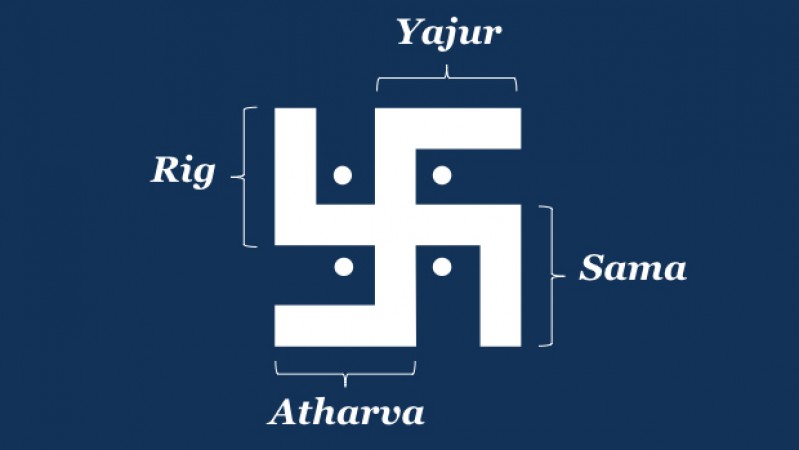
The swastika, a revered symbol in Hinduism, carries deep spiritual and cultural significance. Its distinctive shape, with four arms branching out in opposite directions, has been associated with good fortune, well-being, and auspiciousness for thousands of years. The swastika, an age-old symbol in Hinduism, carries profound significance and meaning. It represents auspiciousness, good fortune, and the cosmic order. Its visual appeal and spiritual symbolism make it a cherished and revered symbol for Hindus worldwide. The swastika serves as a reminder of the divine presence, a symbol of protection and spiritual evolution, and a link to the rich cultural heritage of Hinduism. As a symbol that transcends boundaries, it continues to inspire and evoke reverence in the hearts of millions.
ALSO READ - The Significance of Tikka in Hinduism: A Symbol of Tradition and Blessings
The swastika is one of the oldest known symbols, dating back several millennia. It holds a universal presence, appearing in various cultures and religions across the world. In Hinduism, the swastika is widely regarded as a representation of Lord Ganesha, the remover of obstacles, and is associated with Lord Vishnu and the Sun god, Surya.The swastika is synonymous with auspiciousness and good fortune in Hinduism. The four arms of the symbol are believed to represent the four directions, signifying the all-encompassing nature of divinity. It is commonly used in religious ceremonies, festivals, and auspicious occasions to invoke blessings and bring positive energy into the surroundings.
ALSO READ - The Significance of Monday Fasting During Shravan: A Sacred Observance for Devotion and Blessings
The swastika is often associated with the concept of the cosmic order and harmony in Hinduism. It represents the cyclic nature of the universe, with its arms suggesting the perpetual movement of creation, preservation, and dissolution. The swastika's symmetrical design symbolizes balance, equilibrium, and the interconnectedness of all aspects of existence.Beyond its visual appeal, the swastika holds profound spiritual and philosophical significance. It is seen as a manifestation of divine energy and cosmic power. The four arms can also represent the four states of consciousness—waking, dreaming, deep sleep, and transcendence. The swastika is a reminder of the eternal cycle of life, death, and rebirth, and a symbol of spiritual evolution and transcendence.The swastika is considered a protective and cleansing symbol in Hinduism. It is believed to ward off negative energies, evil forces, and obstacles from the path of the devotee. The image of the swastika is often drawn or painted on doors, thresholds, and sacred objects to create a sacred and protected space.In addition to its religious and spiritual significance, the swastika holds immense cultural and historical value. It is deeply embedded in Hindu art, architecture, and scriptures. The swastika represents the cultural identity and heritage of Hinduism, connecting present-day practices with ancient traditions and wisdom.
ALSO READ - Indian Mythology and Folklore: Unveiling the Tapestry of Ancient Tales